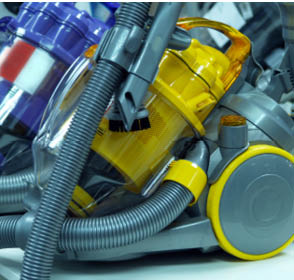 I didn’t think that on this particular Monday morning I would be making a vacuum cleaner. In fact, other than the obvious cleaning of my house, I hadn’t given them much of a thought, let alone consider them to be something a class of primary school children could make!
I didn’t think that on this particular Monday morning I would be making a vacuum cleaner. In fact, other than the obvious cleaning of my house, I hadn’t given them much of a thought, let alone consider them to be something a class of primary school children could make!
So, there we were a group of experienced teachers engaged making cardboard blades, investigating the best shape and size for the fan, creating circuits to run motors and discussing how differences in design changed the effectiveness of our creations - basically working as a team of top engineers…and enjoying every minute.
Now, I have to admit, I still have an image of an engineer that pops into my mind, though I know it to be incorrect. I think of a professor, usually male, appearing from his workshop in overalls or lab coat fresh from inventing a flying car or time machine – these images are most likely there from the films I watched as a child such as Chitty-Chitty Bang-Bang and The Time Machine, no matter where they came from, they are hard to remove! In a quick exercise within the session we wrote down things we thought of to do with engineering. The list was of bridges, cars, machines and tools, the more mechanical aspects of engineering rather than thinking about the various types of engineering.
It is important that we get over these stereotypes and offer all children the opportunity to experience a variety of engineering projects and to realise when we are working as engineers. Quite often we are carrying out activities in science and design and technology which are examples of the kind of tasks carried out by engineers. These can include making a parachute, designing a wind turbine, investigating appropriate materials for thermal insulation, making musical instruments. Even when we are thinking about appropriate packaging or building a structure out of paper to support a tray we are working on engineering problems. The list could go on, but they are all practical, engaging activities in which children find solutions to problems using science and mathematical knowledge to help them.
"Design and technology projects open the door to the processes used by engineers and are great for engaging all children in an engaging practical activity."
The main outcome from our day of engineering, apart from dashing some of our pre-conceived ideas, was the amount of learning children experience through these projects; participating in tasks finding different solutions to problems, enhancing their understanding of science and engineering, whilst helping to develop questioning and creativity and problem-solving skills.
As there is a lack of skilled engineers in the country, it is important that we start making children aware of the world of engineering at an early age. Design and technology projects open the door to the processes used by engineers and are great for engaging all children in an engaging practical activity.
So if you are looking for design and technology lessons try these resources which include ideas for keen on creating your own vacuum cleaner, hanging sculptures or applying knowledge of gears, levers and pulleys to create a mechanical toy.
If you've found this blog inspiring, why not explore resources to help you bring engineering into the primary classroom?
